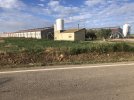Anniesantiago
Veteran Member
- Time of past OR future Camino
- 2006 to date: Over 21 Caminos. See signature line
I wasn’t sure where to post this so mods feel free to move it.
This year I’ve had more than one person in my group complain because the pork they ordered was “raw” and they have sent it back to be cooked to well done.
This is a leftover in the United States from our parents’ and grandparents’ days when trichinosis was rampant. That is no longer the case.
In addition, the pork you are served in Spain is not the common corn-fed feedlot pork of the USA. It is often free range and fed on acorns which makes the meat particularly sweet.
Here is a little article that explains. The video is also also good.

 eatcampogrande.com
eatcampogrande.com
This year I’ve had more than one person in my group complain because the pork they ordered was “raw” and they have sent it back to be cooked to well done.
This is a leftover in the United States from our parents’ and grandparents’ days when trichinosis was rampant. That is no longer the case.
In addition, the pork you are served in Spain is not the common corn-fed feedlot pork of the USA. It is often free range and fed on acorns which makes the meat particularly sweet.
Here is a little article that explains. The video is also also good.

Think Pink: How to Cook the Perfect Ibérico Pork Steak
The truth about medium-rare pork “How would you like your steak?” If you’re ordering a cut of beef at a restaurant and know what’s good for you, your response to this question should be something along the lines of, “medium” or “medium-rare.” So then why is it when we cook a quality cut of pork...
























